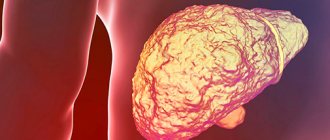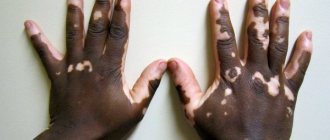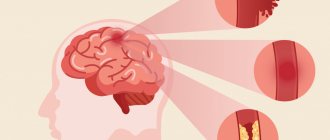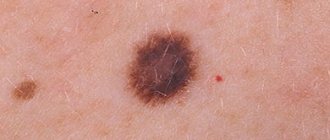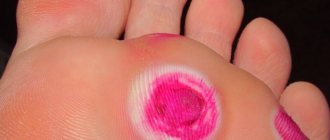Dermatologists and cosmetologists, when treating patients about unclear skin rashes, begin the examination with questions and tests characterizing the functioning of the liver. It is known that many chronic diseases of this organ proceed secretly for a long time. People may not be aware of the pathology, and skin changes are associated with age, infection, and hormonal fluctuations.
Skin rashes due to liver disease are a sign of damage to hepatocyte cells and their initial functional failure. But external manifestations can be indirectly related to the liver, since failure and overload in work contribute to a decrease in protective forces and often provoke other diseases.
What functions of the liver take care of the skin?
The work of the liver can be compared to a non-stop factory for the synthesis of vital materials, the neutralization of toxic substances that have entered the body, participation in digestion, and the production of energy for existence. All together is called internal metabolism or metabolism.
As a result of complex biochemical processes, the body maintains the required level of immunity, the concentration of vitamins, and some hormones (sex, adrenal, thyroid). Ensures growth and adaptation to various life situations.
The skin also participates in protection and elimination of toxins through sweat. But for their functioning, skin cells must receive energy from the liver, building material (proteins), collagen to ensure elasticity and turgor, vitamins A, E, C to remove hydroxyl residues and fight aging.
A depot of water- and fat-soluble vitamins B, PP, D, K, and microelements (copper, iron, cobalt) is created in the liver. In the absence of them in food, thanks to these reserves, the body can painlessly support itself for some time.
Vascular “spiders” are formed by blocking the blood outlet from the capillaries
Nutrients and oxygen flow through the vessels. Their patency is maintained with the help of the blood coagulation and anticoagulation systems, which receive components from the liver. And the structure of the walls depends on the ratio of lipoprotein fractions, cholesterol and triglyceride content. Pastiness, swelling of the skin, hemorrhagic rashes, and bruises indicate a violation of this process.
It is important to remember that toxic substances are not only alcohol, drugs, or obviously poor-quality and poisonous products. They are constantly formed during metabolism during the breakdown of proteins, phenolic compounds, and acetone. It is only thanks to good detoxification in the liver that we do not feel them.
The production of antibodies, immunoglobulins and other components of the immune system makes it possible to protect the skin from infection by external agents and limit the infection by a local inflammatory reaction.
Neutralization of bilirubin by binding it with glucuronic acid creates a healthy color of the skin and mucous membranes. Impaired functioning of liver cells is accompanied by external disorders. Therefore, based on the condition of the skin, nails and hair, the doctor may suspect functional failure or liver pathology.
General recommendations
It is necessary to limit your time in the sun and avoid solariums. In the summer, use products to protect against ultraviolet exposure, choosing cosmetics with SPF of at least 30. To prevent spots, regularly use face care products that contain antioxidants.
You need to pay attention to nutrition and liver condition. Malfunction of the gland leads to the appearance of liver pigmentation, therefore, along with the removal of spots, it is necessary to undergo treatment for the diagnosed disease.
How does the appearance of a person with liver pathology change?
An attentive doctor always evaluates the patient's unhealthy appearance in search of symptoms of various diseases. Women's attempts to hide spots on their faces with the help of cosmetics calm patients for a short time, but do not eliminate other skin manifestations.
A sign of a diseased liver in males and females is considered to be a tired appearance, dry, thin skin with a grayish tint. Vessels and an expanded venous network are visible through the surface layers. There are places with peeling, especially on the elbows and knees. The hair is thin, falling out, and there are traces of dandruff on the clothes.
Symptoms of biliary cirrhosis of the liver
A person with liver disease looks older than his biological age. This is confirmed by deep wrinkles, cholesterol deposition on the eyelids (xanthelasmas), a violation of pigment metabolism with the appearance of brown spots on the hands, face, and other parts of the body.
In addition, patients experience increased sweating with a strong, unpleasant odor. On the legs, swelling is located in the ankles and shins. It can be detected by pressing your finger on the skin.
What is needed besides treatment
Any disease requires not only taking medications, but also introducing some changes into your life, such as diet. The liver is an important link between food and its benefits to the body. Therefore, nutrition must be correct. It is not recommended for a person with a diseased liver to consume fatty, fried, salty, spicy, and sweet foods. It is better to eat more vegetables and fruits, whole grains. It is acceptable to consume low-fat milk and meat.
You should give up bad habits. This may be difficult, but remember: the liver is a self-healing organ, so by removing the source of negative influence on it, you will increase the likelihood of recovery many times over. A healthy liver will provide smooth, beautiful skin without breakouts.
Types of skin changes
Liver diseases manifest themselves in different ways:
- dull arching pain in the hypochondrium on the right or a feeling of heaviness;
- heartburn, belching;
- diarrhea;
- change in urine color to darker, lightening of stool;
- temperature rise.
Large spots should be differentiated from lichen
On the skin, changes appear in a latent period, when other signs can only be detected in the laboratory. In some patients, suspicious symptoms are detected already in the chronic advanced stage. In others, when the liver is overloaded due to acute poisoning, alcohol intake, or abuse of fatty and fried meats.
The most characteristic changes include:
- Redness of the palmar surface (palmar erythema). If you press, the redness disappears, then returns to its previous shade.
- Vascular “spiders” or “stars” form on the face, nose, chest, and shoulder girdle. They are formed by subcutaneous stagnant capillaries due to impaired outflow and small blood clots.
- Red dots all over the body are called angiomas. They are small tumors from the vascular wall. Their development is stimulated by metabolic disorders.
- The tongue and mucous membranes of the mouth and lips turn red, and less often, cyanosis is added.
- Bruises in different parts of the body occur due to disturbances in the coagulation system and increased permeability of the vascular walls. They can be of different sizes and shapes. Sometimes patients have pinpoint hemorrhages on the skin similar to urticaria; the sclera is called “injected.”
- White spots (vitiligo) on the skin of the face, back, and arms are considered a symptom of impaired pigment metabolism.
- Increased dryness, peeling of the surface layer.
- Stretch marks (striae) are found in the lower abdomen, thighs and buttocks in both men and women.
Small itchy rash in open areas - most often detected in liver pathology
How does hyperpigmentation manifest?
Hyperpigmentation in liver diseases manifests itself as spots on the skin of different sizes and locations. The color of the skin is determined by a special pigment, melanin. It is found in the cells of the epidermis (surface layer). The accumulation is ensured by special skin cells - melanophores, which have the ability to absorb ultraviolet and infrared rays, thus protecting the body from overheating.
The synthesis of this substance occurs in skin cells (melanocytes) from the amino acid tyrosine. A special liver enzyme, tyrosinase, ensures and controls this reaction. Pigment metabolism in hepatocytes is affected by the endocrine system, neuropsychiatric disorders, and heredity.
Metabolic disorders in liver cells occur under the influence of pathology or physiological actions. Thus, gray-brown spots on the body appear due to excessive tanning in pregnant women. The most common localization of age spots is the face (forehead, cheeks), chest and arms. The color varies from gray to brown.
The spots may resemble large freckles. Hepatic chloasmas are distinguished by their rounded, irregular shape, dark brown color, and location on the face. Melasma are symmetrical brown spots on the face, shoulders, and neck. They occur more often in pregnant women, as well as under the influence of taking hormonal contraceptives.
The entry into the blood of an increased content of another pigment - bilirubin - causes general yellowing of the skin. It begins to appear with yellowing of the sclera. Endocrine insufficiency includes brown discoloration of the skin in the groin area and armpits.
It is not recommended to get rid of such stains on your own.
Treatment of age spots in liver diseases
Before removing stains using a laser or specialized drugs, it is recommended to visit a doctor and examine the liver and gastrointestinal tract for pathological processes. Leveling the external defect does not in any way affect the root cause of its appearance; the likelihood of relapse is high.
Elimination of the cause of occurrence
When the cause of pigmentation on the face is liver disease, the spots will appear again and again after each removal. It is necessary to look for the cause and influence it. When you get rid of liver disease, the spots may go away on their own.
To find the cause, you need to undergo a series of examinations - laboratory tests of blood, urine, feces and instrumental studies - computed tomography, ultrasound, MRI, fibroscanning (if cirrhosis is suspected), biopsy.
Cryodestruction
Cryodestruction helps to get rid of liver spots - the elimination of pathological elements with the help of vital nitrogen. For complete removal, 1-2 procedures are enough.
The process is as follows: the doctor applies liquid nitrogen to the spots with a special sprayer or cotton pad.
Advantages of the technique:
- Fast stain removal, easy technique.
- No blood or tissue scarring.
- A painless option to fix the problem.
- Minimal trauma.
- No special care is required after the procedure.
The disadvantages of cryotherapy include fairly long healing - within 3 weeks, and the presence of contraindications.
Photorejuvenation
Phototherapy is an effective and modern way to get rid of pigmentation.
According to the description of the procedure, the skin is exposed to impulses that destroy melamine accumulations.
Radiation is completely safe for humans. After manipulation, the treated area darkens, then exfoliates, is renewed, and the shade is evened out.
Advantages of photorejuvenation:
- Safety. Phototherapy does not injure tissue, so the formation of scars and the addition of an infectious process are excluded.
- Painless. During treatment, the patient feels a slight burning or tingling sensation. In case of severe pain, it is possible to numb the treated areas.
- Short recovery period. After phototherapy, you should not be in the sun or use cosmetic creams. Recovery takes 3-5 days.
- Productivity. You can remove a stain of any size, regardless of location.
Since the liver and facial pigmentation are related, phototherapy cannot guarantee 100% recovery if the diseased gland is not treated.
Laser removal
Modern laser treatment helps to get rid of even the darkest stains; the procedure is carried out by a doctor. The removal process includes several steps:
- A special preparation in the form of a gel is applied to the surface of dark areas, which ensures close contact between quantum rays and the epidermis.
- The affected area is irradiated using a laser.
- An antiseptic solution is applied to the treated area.
- To prevent scar formation and speed up regeneration, cover the treatment site with a sterile bandage with antiseptics.
The technique has contraindications - mental disorders, elevated body temperature, malignant neoplasms, pathologies of the cardiovascular system, organic lesions of the central nervous system.
Folk remedies
Unconventional methods help clear the skin of stains that appear due to liver disease.
The following home cleansing options are effective:
| Sorrel | A compress of fresh sorrel whitens the skin. It is necessary to grind it into a pulp, put it on a gauze napkin, and apply it to the affected area for 15 minutes. The manipulation is repeated every 2-3 days until the defect disappears completely. |
| Avocado | Herbal ingredients effectively whiten the skin. Rub the pulp into age spots. |
| Lemon + egg white | Mix lemon juice with egg white in equal proportions and apply to the affected areas using a cotton pad. |
| Vinegar + onion | Onion juice and vinegar are mixed in equal proportions. The liquid is applied to age spots once a day. |
| Elder | You need to pour a tablespoon of dry plant into 200 ml of boiling water, leave for 5 hours, filter 2 times. The resulting solution is used for compresses - 2-3 times a day for 15 minutes. |
| Chickweed | A decoction is prepared based on the plant, and the affected areas are wiped with it several times a day. |
What skin diseases are caused by liver damage?
Impaired liver cell function reduces the production of protective antibodies and immunoglobulins. Under such conditions, the skin is not able to “repel the attack” of infectious agents. Dryness creates comfortable conditions for penetration into the deeper layers.
Therefore, a rash in liver diseases is a consequence of negative external and internal influences to which the organ is not able to respond.
Acne is most often located on the temples, bridge of the nose, and forehead. Small pustules - boils are always located in the hair follicle area and spread inward. Localized on the arms, legs, chest. They can merge to a significant size with a purulent center, an edematous shaft, and pain.
Allergic manifestations - dermatitis with red spots, plaques, small rashes in the form of urticaria, accompanied by severe itching and fever. Psoriasis - the etiology of the disease has not been fully established, but there is a version that it is provoked by bile acids entering the bloodstream.
It appears as merging pink spots covered with gray thin scales. The disease seriously aggravates liver pathology and affects the joints of the limbs and spine.
Eczema - most often looks like bright, weeping spots located symmetrically on the body, covered with crusts and peeling. Patients with liver disease are prone to fungal infections (mycoses). They develop in the superficial layers, affecting nails and hair, mucous membranes, and skin folds.
Why does itching occur?
Skin itching due to liver pathology worries the patient more than pain. It exhausts you and doesn't let you sleep. A man combs different parts of his body. Scratches appear on the skin, which quickly become infected and fester. Itching is not relieved by antihistamines and increases significantly with the appearance of jaundice.
Itching of the skin is one of the clearest symptoms of liver pathology.
The causes of itching are the combined effects of:
- stagnation of bile, blockage of ducts;
- increased concentration of bile acids in the blood;
- toxic and poisonous substances that are not neutralized by the liver.
What liver diseases cause changes in the skin?
Liver diseases vary in cause. All of them lead first to the functional inferiority of hepatocytes, then they destroy the organ and replace it with scar tissue.
- Inflammatory pathologies include: viral and toxic hepatitis, damage from tuberculosis and syphilis, abscesses, autoimmune diseases.
- Metabolic disorders are characterized by: alcoholic and non-alcoholic steatohepatosis (fatty degeneration), alcoholic liver disease.
- Consequences of blunt trauma in the abdomen, ruptures, stab wounds, crushing from gunshot wounds.
- Diseases of large vessels: hepatic vein thrombosis, pylephlebitis (portal vein suppuration), portal hypertension in cirrhosis, fistulas and arteriovenous fistulas.
- Pathology of the bile ducts: intrahepatic congestion, acute and chronic purulent cholangitis, formation of stones from salts, congenital dilation of the ducts inside the liver with increased stone formation and small abscesses in the parenchyma.
- Tumor processes: cyst, hemangioma, hepatocellular and intraductal cancer, sarcoma, metastases.
- Parasitic diseases with localization of the focus in the liver are caused by: alveococcus, echinococcus, roundworms, opisthorchiasis, leptospirosis.
- Hereditary anomalies: complete absence or underdevelopment of the organ, narrowing of the ducts, fermentopathy with disruption of various types of metabolism.
In addition, differential diagnosis always takes into account the possibility of secondary liver damage caused by changes in other organs. Therefore, signs of congestion in heart failure, amyloidosis, blood diseases, renal and hepatic failure in diseases of the urinary organs are excluded.
What to do
Having discovered manifestations that are atypical for a healthy person, many people are wary, but do not rush to see a doctor. Meanwhile, delay can be fatal.
Prolonged discomfort in combination with skin disorders is a reason to consult a therapist. He will prescribe blood, urine and stool tests, liver tests, ultrasound of internal organs and decide what to do next. In case of serious pathologies, the therapist refers patients to a hepatologist - a specialist in liver diseases.
Possible treatments
There are quite a few diseases that affect the liver. The choice of treatment options is just as great. Not just any method will be suitable - this decision is within the competence of the doctor. What can be offered? These are the following drugs:
- Hepaprotectors. This is a group of medications with herbal or synthetic ingredients that are aimed at restoring damaged organ cells. These include Karsil, Gepabene, Ursosan, Essentiale, Bonjigar, Gepadif.
- Antihistamines. If the rash is caused by a liver reaction to allergens, these drugs help stop the acute immune response. Well-known drugs are Suprastin, Loradatin.
- Sorbents. Since a diseased liver is unable to cope with the flow of toxins, its function must be taken over by sorbents - substances capable of absorbing (sucking in) components that poison the body. You need to use Enterosgel, White Coal, Polysorb, Polyphepan.
- Antiviral agents. Prescribed for hepatitis - each type has its own medicine.
- Antihelminthic drugs. If one type of worm is diagnosed, treatment is prescribed by a parasitologist. Popular methods of expelling worms on your own are fraught with the formation of abscesses in the liver.
- Immunomodulators. Prescribed to support the immune system during periods of weakness due to illness (Likopid, Amiksin and others).
- Vitamins. Due to liver dysfunction, the body does not receive enough nutrients, so their deficiency needs to be replenished.
A large number of medications can completely destroy the liver, so it is extremely important that they are prescribed by a specialist. Skin manifestations usually disappear after the diseased organ is put in order, so only products aimed at reducing discomfort are used externally. Hormonal-based creams and ointments will help relieve itching and swelling. Preparations containing dexpanthenol promote healing and softening of tissues.
Is folk treatment possible?
At home, treatment is possible only in combination with therapy prescribed by a doctor and with his permission. To get rid of a disturbing rash, you can use infusions:
- chamomile;
- oak bark;
- sequences;
- sage;
- calendula;
- celandine.
These infusions will help reduce the discomfort that the rash brings - itching, swelling, hyperthermia.
In order to help the diseased organ, you can take herbal infusions orally. Very useful:
- corn silk;
- tansy;
- dandelion;
- birch leaves;
- milk thistle;
- St. John's wort;
- rose hip;
- mint;
- yarrow;
- motherwort;
- horsetail;
- oregano;
- hop;
- dill;
- fennel.
The list goes on. These herbs can be taken either separately or as part of a mixture. And remember that under no circumstances should they replace the main treatment.
It is very useful for liver diseases to take freshly squeezed juices from pumpkin and carrots. However, if you have sallow skin, these vegetables can make it even worse.



